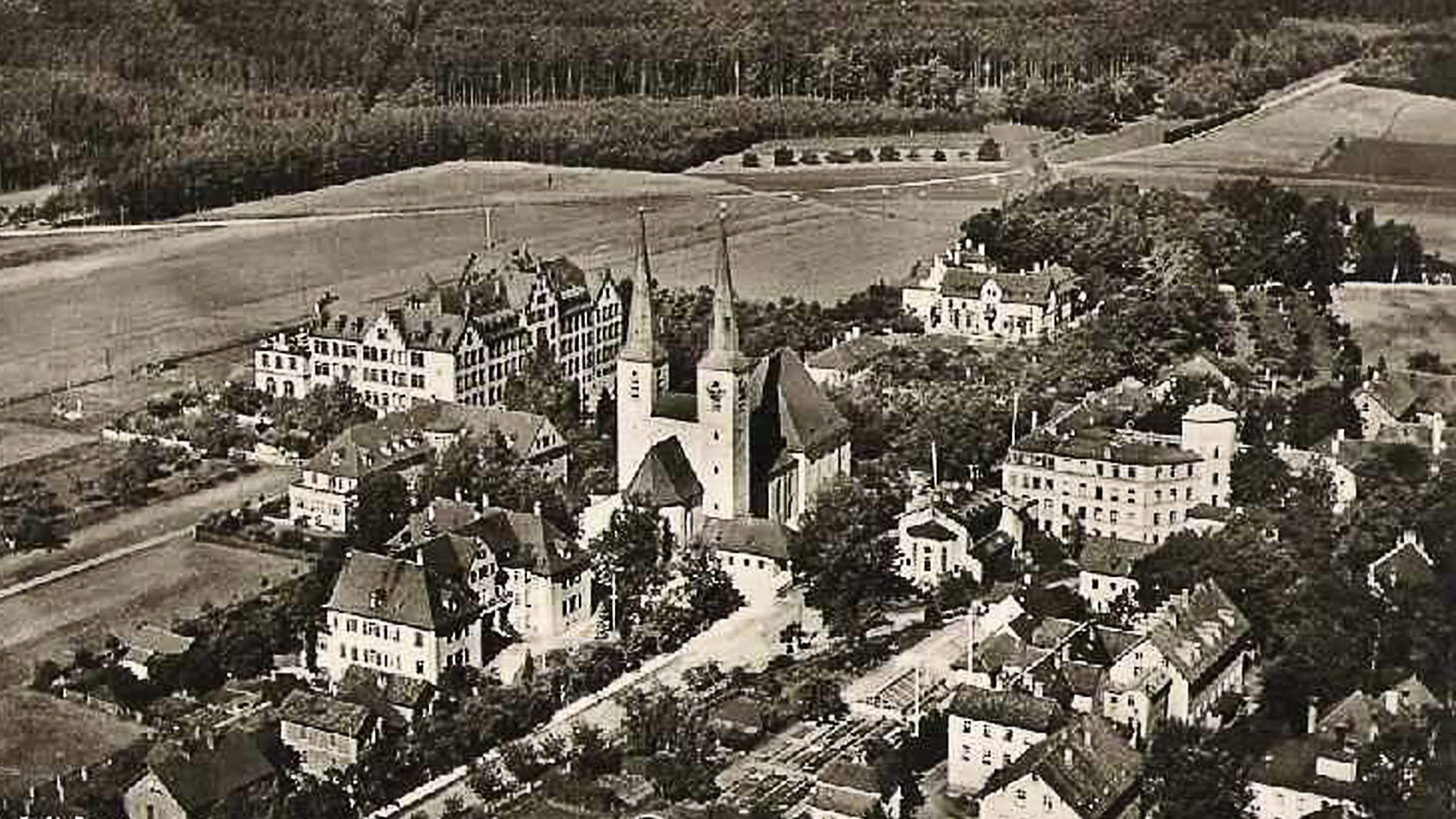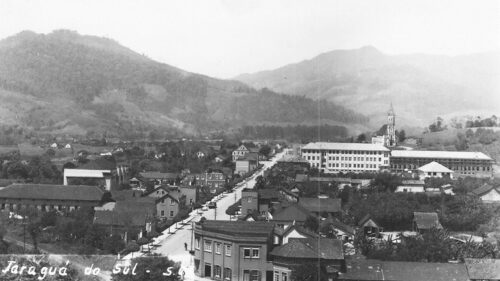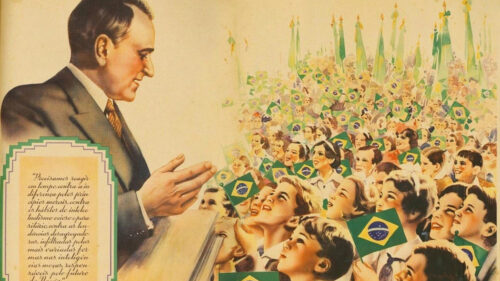In the post-war years, Georg Weger learns from letters of his friend Adam Schuster about the situation in Neuendettelsau:

Neuendettelsau is still standing […] Our seminary, thanks to the kind permission of the American military government, has been up and running again since January 27, 1946. […] Mr. Director [Eppelein] and Brother Keyßer had to resign from their offices for certain reasons (pg). Brother Vicedom is the successor of Brother Keyßer.
Adam Schuster to Georg Weger, 1946
The Americans set a condition for the reopening of the mission seminary: “complete denazification” of the mission institution had to take place. Its National Socialist leadership, namely Mission Director Dr. Friedrich Eppelein and Mission Inspector Dr. Keyßer, is politically unacceptable to the American military government and is forced to resign.2
In November 1945, they justify having joined the [Nazi] party on May 1, 1933, by stating:
Just as the Gentile missionary Paul was ready to become a Jew to the Jews and a Greek to the Greeks, likewise they [Eppelein and Keyßer] wanted to become a National Socialist to the National Socialists in order to be able to preach the word of God to them more effectively.
“Die politische Lage und ihre Auswirkungen auf die Neuendettelsauer Mission” described by Eppelein und Keyßer, 1945, November 2
Christian Keyßer
Christian Keyßer – great-grandfather of the current ‘cult commissioner’ Haringke Fugmann, writes to the Spruchkammer [Translator’s note: court handling denazification] in Ansbach in 1946:
I was a Nazi by conviction and by free will.
Christian Keyßer, 1946
Unfortunately I didn’t get a chance to meet, see, or hear Adolf Hitler before 1933. Appalled by the party system in my home country [Weimar Republic], I would have preferred to go abroad again, but I did not find a suitable opportunity. In 1933 the change in Germany caught me with all might, so that I joined the National Socialist movement. I will remain faithful to it and hope that I, as a convinced Christian, can live my Christian convictions. True National Socialism and honest Christianity are no opposites. – Heil Hitler
Excerpt from the résumé of Christian Keyßer, 1940
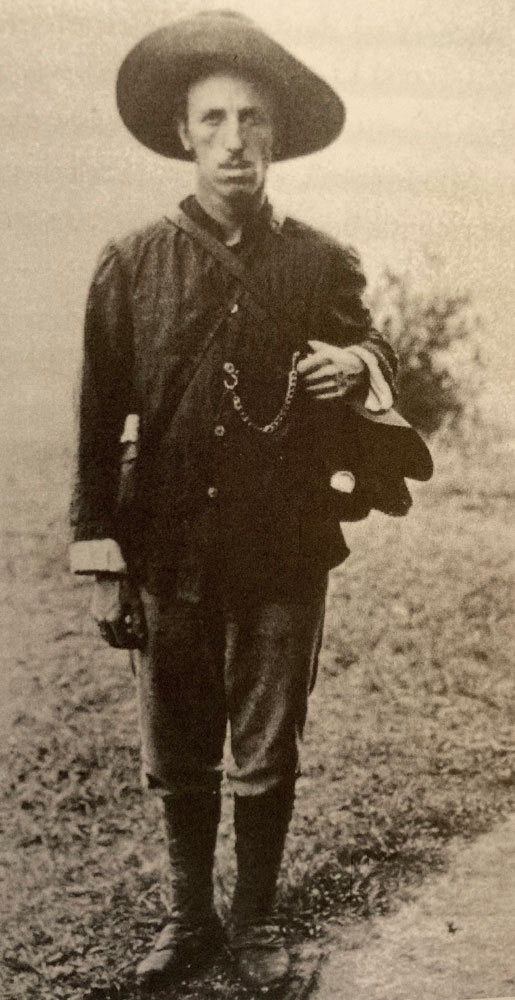
Keyßer is both activist and beneficiary of the system. In 1946 the Spruchkammer classifies him as an “offender”, which was the second highest category of Nazi criminals. The Bavarian regional bishop Hans Meiser persuades him to appeal the verdict. Although he stands by his convictions, he does not want his children and grandchildren to have documents stating that he is a criminal. He argues before the Spruchkammer:
I cannot accept that my simple, credulous membership in the party is supposed to be a crime.
Christian Keyßer, 1946
The American military government classifies Keyßer as a follower – and eventually he is acquitted.
Anti-Semite Hans Meiser
The declared anti-Semite, regional bishop Hans Meiser3, is still being lauded today as an alleged resistance fighter against the Nazi system. But instead of fighting for denazification of the Protestant Lutheran Church in Bavaria, he makes sure that its Nazi-pastors receive an amnesty.4 He exploits the ignorance of the Americans, to whom it is unthinkable that German pastors can be ardent, fanatical Nazis at the same time. Thus most of the pastors are vindicated and after 1945 promoted back into their positions.5 Also Friedrich Eppelein quickly finds employment as a pastor again – this time in Zirndorf near Fürth.6
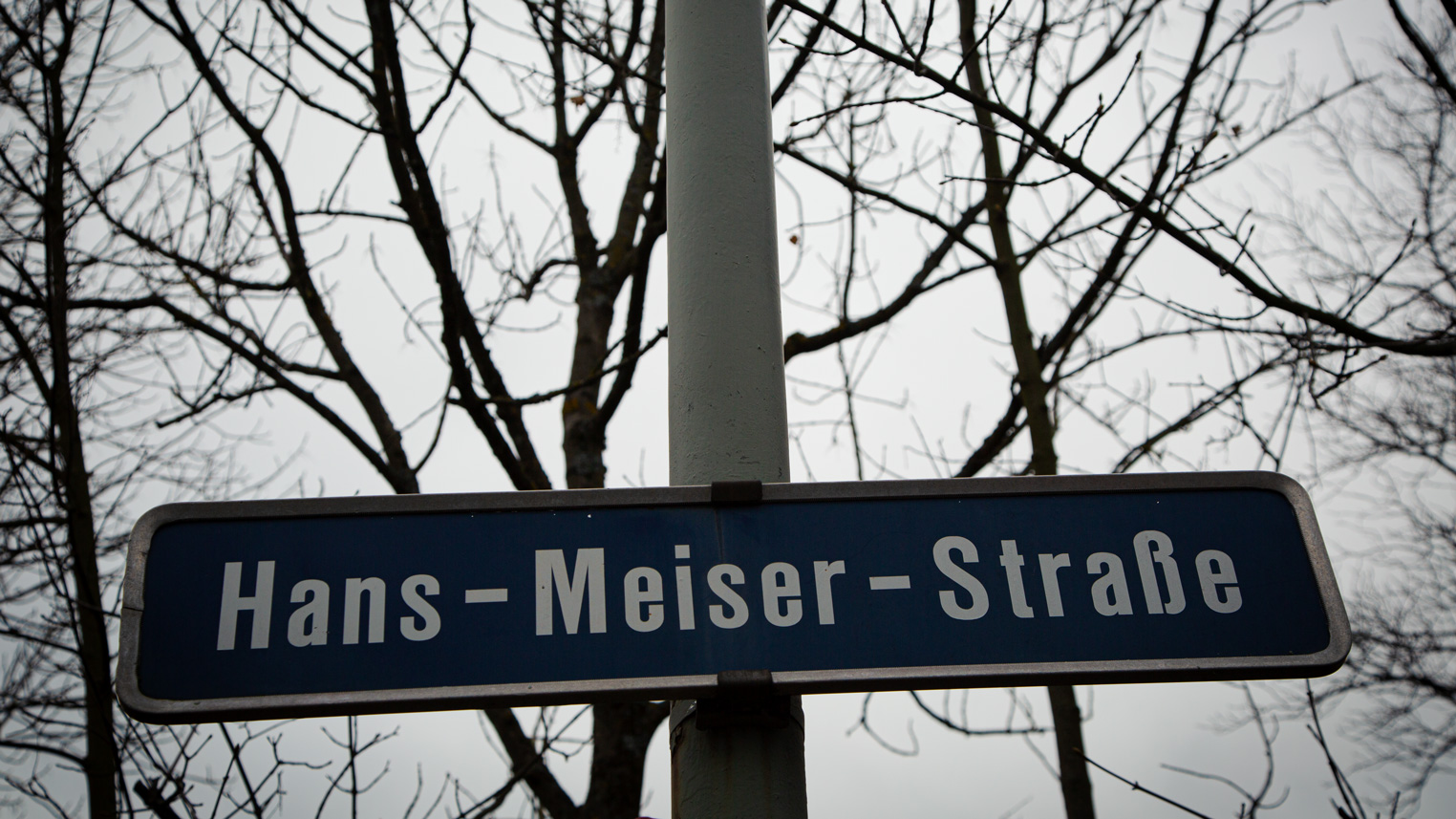
Hans-Meiser-Straße Bayreuth, 2020
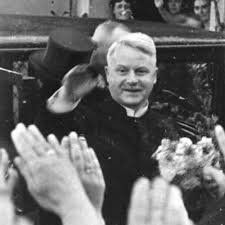
Hans Meiser 1933
Nazi bishop Meiser plays an essential role in the founding of numerous institutions which still have bearing for the regional church today – also in Neuendettelsau. It is also “thanks to him” that the Pastoral College and the Augustana Seminary were founded.7
Renazification
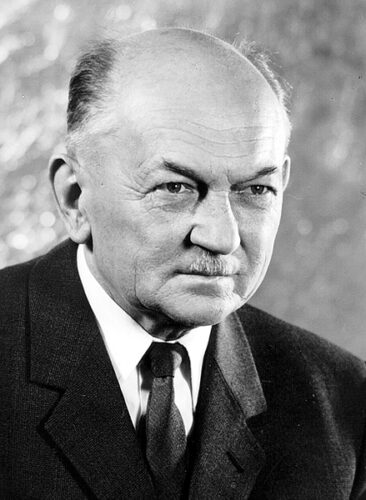
De facto, the mission institution had never been denazified. The case of Georg Vicedom serves as an example for failed denazification. Vicedom was a missionary in New Guinea until 1939 and a student of Christian Keyßer. In 1946 he succeeded him as mission inspector in Neuendettelsau.
In the year 1940 he states in his résumé:
It was also painful for me that I did not get accepted into the A.O. [foreign organization] of the NSDAP, all the more painful because me and my other fellow students participated in the national resistance against Communism from 1922-1929, and we, as members of the Reich’s flag in 1923, were always ready for battle to fight with the Fuehrer A. Hitler. On my return we saw the tremendous rise of Germany under our beloved Fuehrer A. Hitler and I am happy to witness the great historical decisions at home.
Excerpt from the résumé of Georg Vicedom, 1940
In 1956, Vicedom takes over the newly established chair of missiology at the Augustana Seminary in Neuendettelsau. In 1964, he receives the Bavarian Order of Merit. In Protestant Lutheran church circles he is considered as one of the “most important mission theologians of the 20th century”.8
In 1967, Rubens Horst, who was at that time a student of theology, also listens to Georg Vicedom. The Nazi-pastor holds an exclusive guest lecture at the theological seminary in São Leopoldo, Brazil.9
1 Vorländer, Hermann: Kirche in Bewegung. Die Geschichte der evangelischen Mission in Bayern, 2014. p. 245
2 „Die politische Lage und ihre Auswirkungen auf die Neuendettelsauer Mission” explained by Eppelein und Keyßer, 1945
3 Lutheran regional bishop Hans Meiser, elected as regional bishop in Bayreuth in 1933. In: Sommer, Wolfgang: Freimund – Kirchlich-politisches Wochenblatt für Stadt und Land. Eine regionale Zeitschrift in Franken zur Zeit der Weimarer Republik und des Nationalsozialismus; Zeitschrift für bayerische Landesgeschichte 2013, Band 76 [no. 3], p. 846
4 Vollnhals, Clemens: Evangelische Kirche und Entnazifizierung 1945-1949. Die Last der nationalsozialistischen Vergangenheit. p. 137; Klee, Ernst: Persilscheine und falsche Pässe. Wie die Kirchen den Nazis halfen, 1991. p. 14
5 ibid.
6 Grottke, Gotthard, In: Kirchengemeinde Bayreuth-Altstadt (Hrsg.); Unsere Altstadt. 100 Jahre Evangelische Kirchengemeinde Bayreuth-Altstadt. p.48
7 60 Jahre Augustana in Neuendettelsau, 2008. p. 33
8 Vorländer, Hermann: Kirche in Bewegung. Die Geschichte der evangelischen Mission in Bayern, 2014. p. 245
9 Letter of P. Lindolfo Weingaertner, April 1967
Picture credits:
Cover Picture: Postcard of Neuendettelsau around 1940
Christian Keyßer – Rössler, Hans: Nationalsozialismus in der fränkischen Provinz: Neuendetteslau unterm Hakenkreuz, 2018
Website Rothenburg unterm Hakenkreuz, Hans Meiser wird als Landesbischof begrüsst (last date of access: April 16, 2020)
Website Boston University: Georg Friedrich Vicedom, Photo courtesy of the Archives Mission EineWelt, Neuendettelsau, Germany (last date of access: April 16, 2020)
